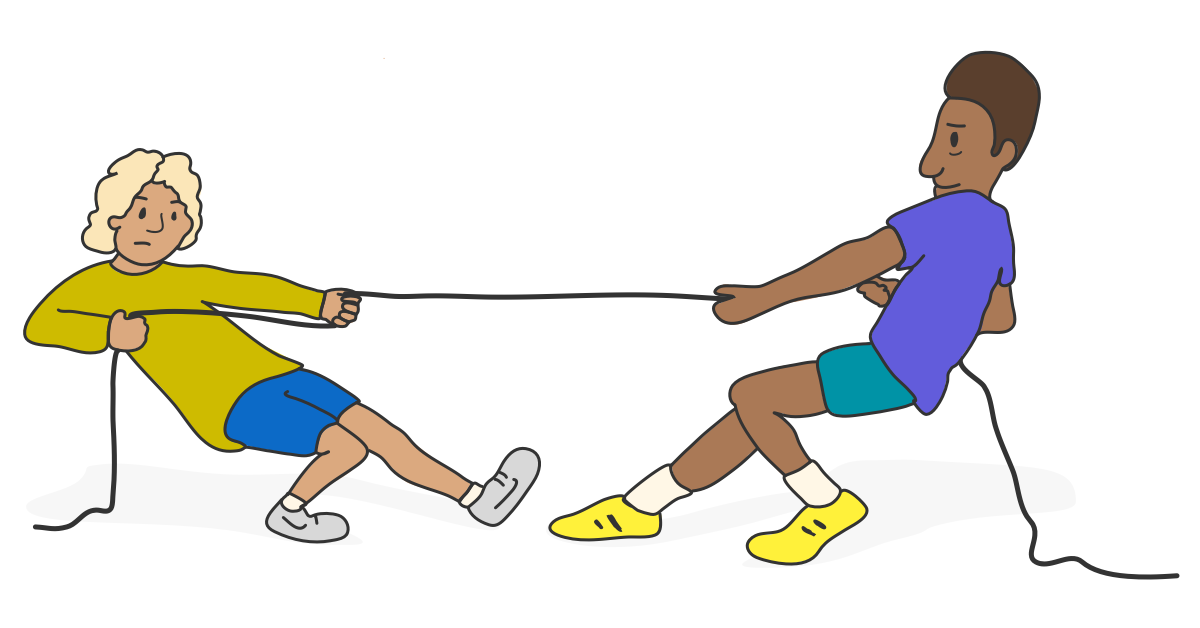Physics of Tug-of-War

The person who is able to pull the other across the middle line is declared the winner. If the rope has negligible mass and is inextensible, who will win the tug of war?
This section requires Javascript.
You are seeing this because something didn't load right. We suggest you, (a) try
refreshing the page, (b) enabling javascript if it is disabled on your browser and,
finally, (c)
loading the
non-javascript version of this page
. We're sorry about the hassle.
This question is tricky because pulling on the rope seems to be the entire purpose of the tug-of-war game. However, common sense betrays us in thinking about this situation. The reason is that horizontal tension is constant throughout a rope.
Consider pulling on a rope that's attached to a wall. If you pull on the rope with force F and the rope doesn't rip from its mooring, the rope experiences zero net force. Therefore, it must pull back on you with the same force with which you pull on it. However, there's nothing special about a wall. In fact, when two people hold onto a rope and pull, they both experience the same force, and indeed exert the same force on the rope. Thus, the force with which each person pulls on the rope cannot explain who wins the tug of war, because they both pull with the same force.
The reason that each person doesn't move when pulled by the rope is that they plant their feet, which creates friction between them and the ground. Frictional forces oppose movement but have a limit to how much force they can resist, i.e. their strength increases to match the force that's trying to pull the object, until it reaches some maximum F max , at which point the frictional force gives way. Think of pushing harder and harder on a box, having no success until you finally push hard enough. What's happened is that you finally exceeded the force of friction.
Thus, each person experiences two forces—one from the tension in the rope, and another from the friction with the ground which points in the opposite direction. We can write the force on each person as the difference of these two forces (Katie) on the left as M K A K = F net K = T − F friction K As long as T is less than F max K Katie won't move from where she's standing since the friction will withstand the pull from the rope ( T = F friction K and therefore F net = 0 . The same is true for the person on the right (Anne).
The only thing about this system that can change is for there to be a mismatch in the strengths of friction F friction K and F friction A . Whichever person has the greater value of maximal friction will be the one who wins the game. For sake of argument, let's say that F friction K > F friction A .
Once T exceeds the smaller F friction A , Amy will begin to slip and be accelerated toward Katie. On the other hand, Katie will stay in place because the friction between her shoes and the ground exceeds T .
Therefore, the friction with the ground is what determines the winner.